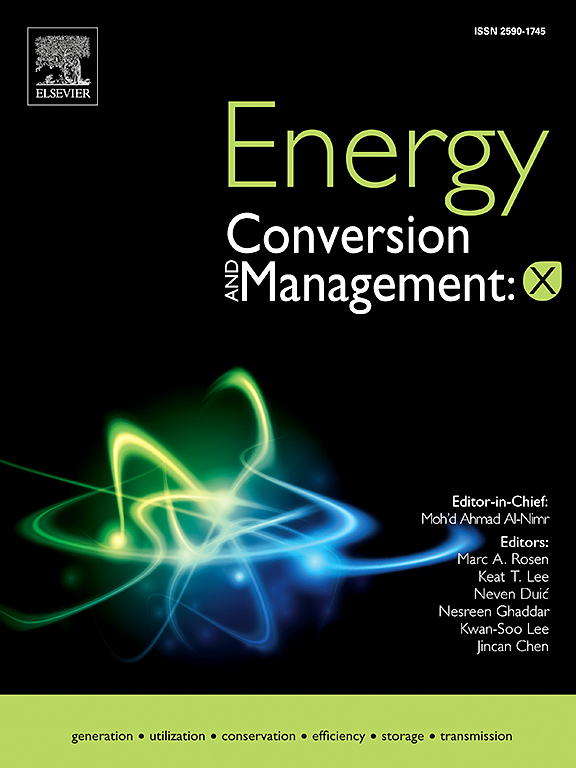Coordinated energy management for EH with responsive demands considering hydrogen storage and PEV preheating in cold climates
IF 10.9
1区 工程技术
Q1 ENERGY & FUELS
引用次数: 0
Abstract
The energy hub (EH) is designed to optimize the management of diverse energy demands, such as electrical, thermal, and natural gas (NG) requirements. To achieve this target, modern EHs integrate a variety of assets such as renewable energy sources (RESs), energy storage systems (ESSs), plug-in electric vehicles (PEVs), hydrogen systems, and a combination of other multi-carrier energy systems (MESs). In recent years, the adoption of PEVs has grown significantly as part of sustainability efforts. However, their charging and discharging efficiency is highly sensitive to ambient temperature. Therefore, in cold climates like Finland, incorporating advanced preheating technologies for PEVs within smart EHs is essential for maintaining battery efficiency and ensuring optimal vehicle performance. In this regard, this paper proposes coordinated optimal operation strategies for smart EHs by integrating hydrogen storage systems (HSSs) and responsive demands. The proposed approach employs an optimization framework to efficiently manage energy flows and enhance the coordination of MESs. Additionally, the study introduces two preheating technologies, addressing both indoor and outdoor scenarios, to further improve PEV performance. By leveraging coordinated HSSs and advanced preheating solutions, the proposed model, as demonstrated by the results, achieves reductions in operational costs and emissions by 2.034% and 0.928%, respectively, while maintaining good battery efficiency and reliable vehicle performance during charging in low-temperature conditions.

协调能源管理的EH与响应需求考虑氢储存和PEV预热在寒冷气候
能源中心(EH)旨在优化各种能源需求的管理,例如电力、热能和天然气(NG)需求。为了实现这一目标,现代EHs集成了各种资产,如可再生能源(RESs)、储能系统(ess)、插电式电动汽车(pev)、氢系统以及其他多载流子能源系统(MESs)的组合。近年来,作为可持续发展努力的一部分,pev的采用显著增长。然而,它们的充放电效率对环境温度非常敏感。因此,在芬兰这样的寒冷气候中,在智能ehhs中加入先进的pev预热技术对于保持电池效率和确保最佳车辆性能至关重要。为此,本文提出了将储氢系统与响应式需求相结合的智能ehhs协同优化运行策略。该方法采用优化框架,有效地管理能量流,增强MESs的协调性。此外,该研究还引入了两种预热技术,分别针对室内和室外场景,以进一步提高PEV性能。结果表明,通过协调使用hss和先进的预热解决方案,该模型在低温条件下保持良好的电池效率和可靠的车辆性能的同时,分别降低了2.034%和0.928%的运营成本和排放。
本文章由计算机程序翻译,如有差异,请以英文原文为准。
求助全文
约1分钟内获得全文
求助全文
来源期刊

Energy Conversion and Management
工程技术-力学
CiteScore
19.00
自引率
11.50%
发文量
1304
审稿时长
17 days
期刊介绍:
The journal Energy Conversion and Management provides a forum for publishing original contributions and comprehensive technical review articles of interdisciplinary and original research on all important energy topics.
The topics considered include energy generation, utilization, conversion, storage, transmission, conservation, management and sustainability. These topics typically involve various types of energy such as mechanical, thermal, nuclear, chemical, electromagnetic, magnetic and electric. These energy types cover all known energy resources, including renewable resources (e.g., solar, bio, hydro, wind, geothermal and ocean energy), fossil fuels and nuclear resources.
 求助内容:
求助内容: 应助结果提醒方式:
应助结果提醒方式:


